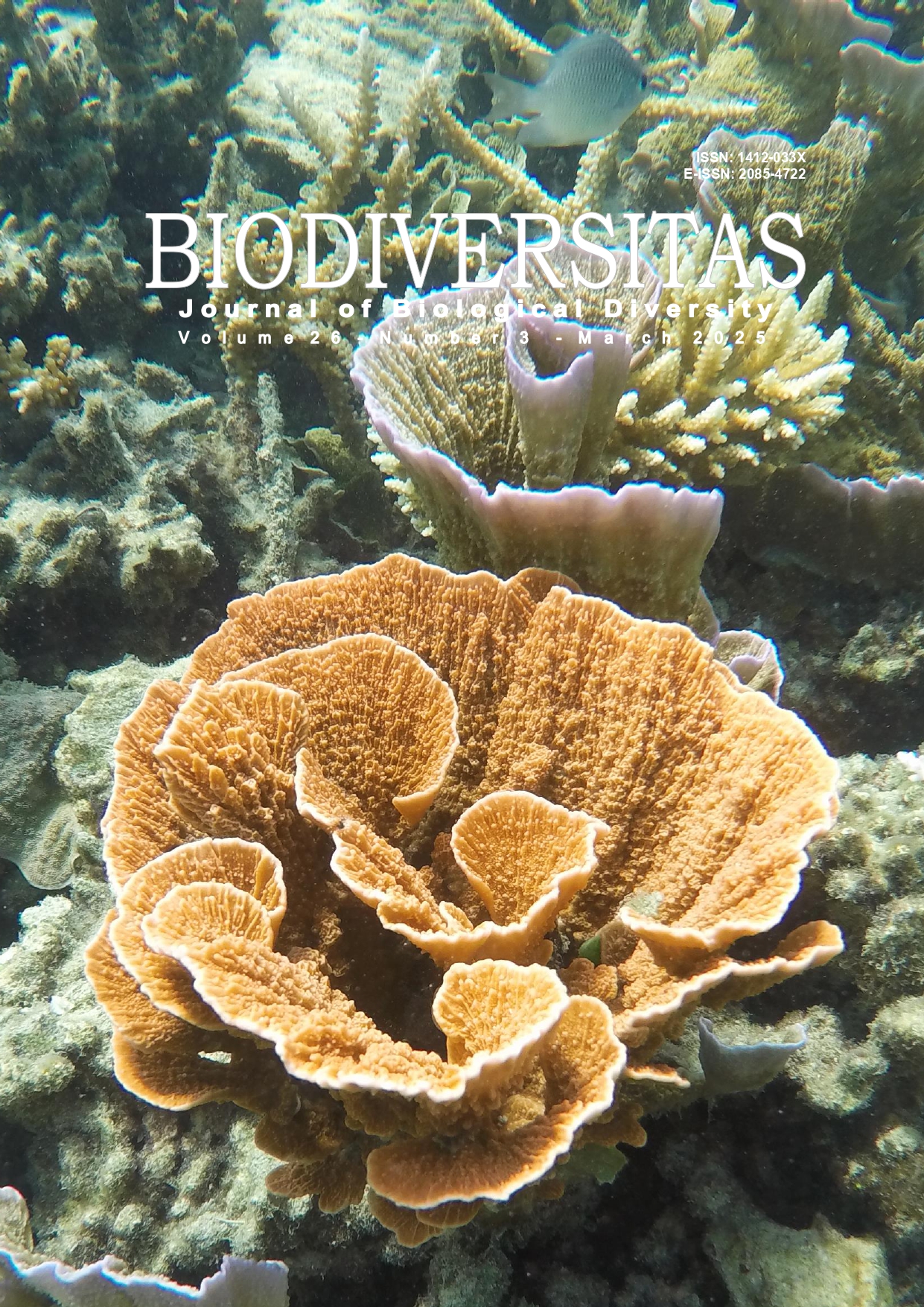Native, endemic, and threatened flora species in a swamp forest in Tagum City, Philippines: Implications for species and habitat conservation
##plugins.themes.bootstrap3.article.main##
Abstract
Abstract. Raganas AFM, Gamalo LED, Chavez Jr JB, De Cadiz AE. 2025. Native, endemic, and threatened flora species in a swamp forest in Tagum City, Philippines: Implications for species and habitat conservation. Biodiversitas 26: 1189-1201. Endemic and threatened plants are among the most susceptible species, and are considered the most effective surrogates for identifying and evaluating conservation priority areas. This study aimed to provide critical information regarding native, endemic, and threatened flora species within the swampy beach forest ecosystem of Hijo, Tagum City, Davao Del Norte, Philippines. A plant survey was conducted using plots along a series of 100 m transect lines within the forest, where all plants were identified, and their distribution and conservation status were assessed. The study focused on native and endemic species, with vegetation analyses examining their influence on forest community structure. The survey identified 117 native and 28 endemic species across 55 families and 116 genera from 239 vascular plant species recorded. Among these, nine species were classified as threatened. Saribus rotundifolius had the highest importance value reflecting its dominance and strong ecological influence within the forest. Threats such as saltwater intrusion and flooding during wet season can potentially endanger regenerating plants. A conservation strategy framework has been developed using ex situ and in situ methods to effectively protect the ecosystem. Furthermore, this study addresses gaps in the insufficient data on beach flora species across the country.
##plugins.themes.bootstrap3.article.details##
Most read articles by the same author(s)
- BENEDICT R. ZAPANTA, MARION JOHN MICHAEL M. ACHONDO, AARON FROILAN M. RAGANAS, FRITZIE A. CAMINO, AILEEN GRACE D. DELIMA, JUNALDO A. MANTIQUILLA, ROBERTO P. PUENTESPINA, JR., FLORENCE ROY P. SALVANA, Species richness of trees in disturbed habitats within a protected area and its implications for conservation: The case of Mt. Apo Natural Park, Mindanao Island, Philippines , Biodiversitas Journal of Biological Diversity: Vol. 20 No. 7 (2019)

